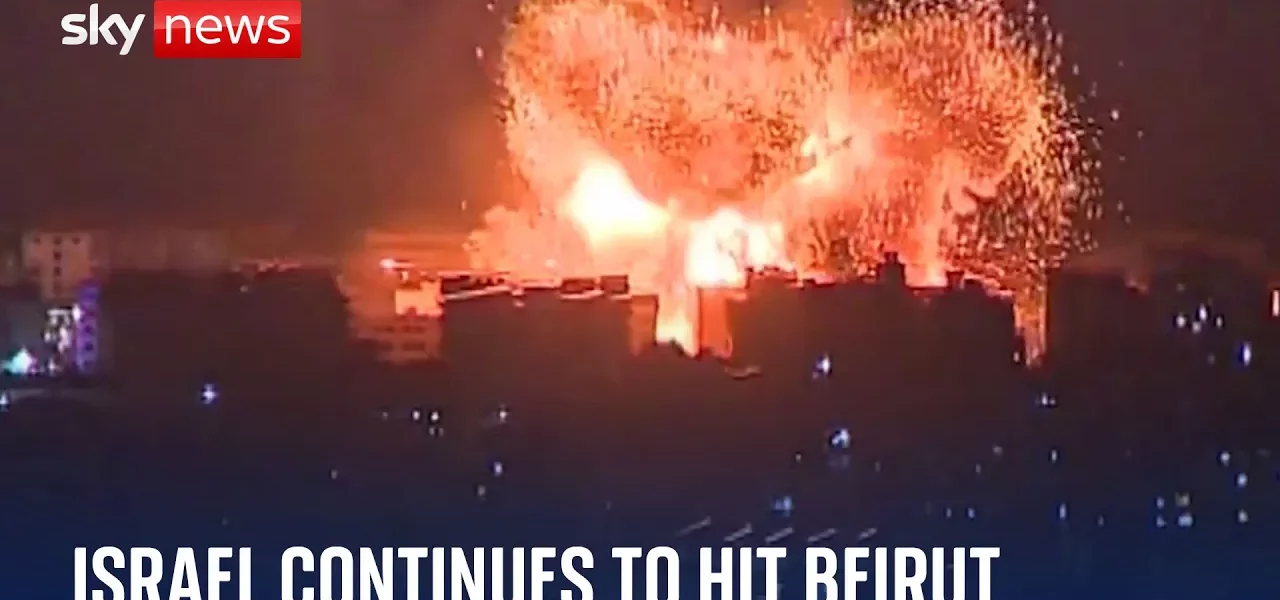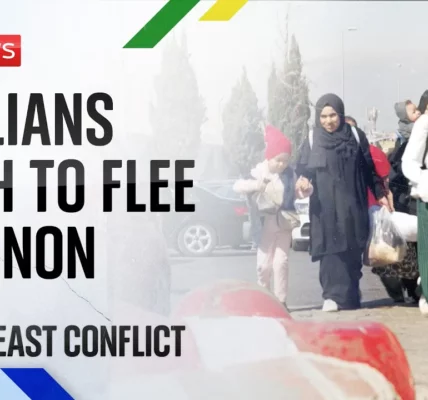Escalating Conflict: The Impact of Military Strikes in Beirut and Gaza

The recent military actions in the Middle East, particularly in Beirut and Gaza, have drawn global attention due to their intensity and humanitarian consequences. This article delves into the aftermath of these events, exploring the implications for civilians and the broader regional conflict.
Introduction
The sound of church bells ringing on a Sunday morning starkly contrasts with the chaos of military bombardments occurring in Beirut and Gaza. As Israeli forces intensify their airstrikes, the repercussions are being felt not only by combatants but also by innocent civilians caught in the crossfire. This article aims to provide a comprehensive overview of these military actions, their immediate effects on local populations, and the ongoing struggle for peace in a region fraught with tension.
The Scale of the Bombardment
The scale and intensity of Israeli bombardments in Beirut and surrounding suburbs have escalated dramatically. Reports from the ground reveal significant destruction, including:
- A giant crater replacing an industrial block along Beirut’s Old Airport Road.
- Smoke and rubble littering the streets, with twisted metal bars resembling spaghetti.
- Claims of destroyed Hezbollah weapon stores, as stated by the Israeli military.
Local Reactions and Perspectives
While the Israeli military asserts that it has successfully targeted enemy ammunition, locals report that many of the secondary explosions were caused by oxygen tanks in warehouses, complicating the narrative of military precision. Witness accounts describe a medical warehouse and nearby buildings being reduced to rubble, raising questions about the legitimacy and necessity of such strikes.
Humanitarian Impact in Gaza
The situation in Gaza paints a grim picture of human suffering. Eyewitnesses recount chaotic scenes following airstrikes:
- Men taking shelter in a mosque were unable to escape when the building was hit.
- Casualties included individuals trapped under rubble and bodies, with at least 19 reported dead in a single attack.
Journalist Accounts and Reporting
Journalists like Hassan Hammad, who cover these conflicts, often find themselves in perilous situations. Hammad was hit by an artillery shell while reporting, and his brother could only identify him by his hair. Such accounts underscore the dangers faced by those attempting to document the realities of war.
The Military Objectives Behind the Strikes
Israeli military operations have been described as part of a broader offensive aimed at dismantling terrorist infrastructure, particularly related to Hamas in Northern Gaza. Key highlights include:
- The movement of armored divisions and troops into the enclave.
- Statements from Israeli officials warning of severe repercussions for those attacking Israel.
- Ongoing preparations for sustained military action in the region.
Political Context and Regional Implications
These military actions are not only a response to immediate threats but are also influenced by broader geopolitical dynamics, including tensions with Iran. Israeli officials have emphasized that their actions are a deterrent to any potential aggressors in the region.
Conclusion
The violent escalation in Beirut and Gaza highlights the complexities of the ongoing conflict and the severe humanitarian consequences for civilians. As military operations continue, the prospect of peace remains dim. It is crucial for the international community to pay attention to these developments and advocate for measures that prioritize human rights and civilian protection. For further insights on the situation in the Middle East, explore our related articles on [regional conflicts](#) and [humanitarian crises](#).
“`




